 Poop. Bird poop. Everywhere. Imagine entire islands covered in knee-deep bird poop with millions of birds making it deeper by the second. Imagine thousands of birds circling overhead making you wish you bought the $4 hat from the guy selling them on the dock. Although grabbing a small bandana from your daypack works in a pinch to protect you from bird-bombs – plus they look super stylish.
Poop. Bird poop. Everywhere. Imagine entire islands covered in knee-deep bird poop with millions of birds making it deeper by the second. Imagine thousands of birds circling overhead making you wish you bought the $4 hat from the guy selling them on the dock. Although grabbing a small bandana from your daypack works in a pinch to protect you from bird-bombs – plus they look super stylish.
This is Islas Ballestas, a few outcroppings of red and white rock off the south coast of Peru. Once we got over our initial fear of being pooped on, the islands were teeming with amazing Peruvian wildlife (even animals outside the bird family). Islas Ballestas is known as the “poor man’s Galapagos” and if anyone cannot drop $3,000+ on Darwin’s famous islands then Islas Ballestas may be just the place for you.
About an hour boat ride off the shores of Paracus, Islas Ballestas is definitely a tourist hot spot. Travelers from all over, including Peru itself, make the trip to the cities of Pisco or Paracus and then take an organized tour out to the islands. The tour costs about S/. 40 ($15), plus a S/. 2 ($0.50) pier tax, and takes about three hours total. Some of the sights include “el candelabro” (a 600 foot tall geoglyph which may have served as a beacon to ancient mariners), beautiful geographic rock formations and arches, and of course all the animals.

Sea Lion swimming lessons – Female sea lions will take their pups out to learn to swim, dive, and fish. When the pups get too tired they will ride on their mom’s backs to catch their breath.
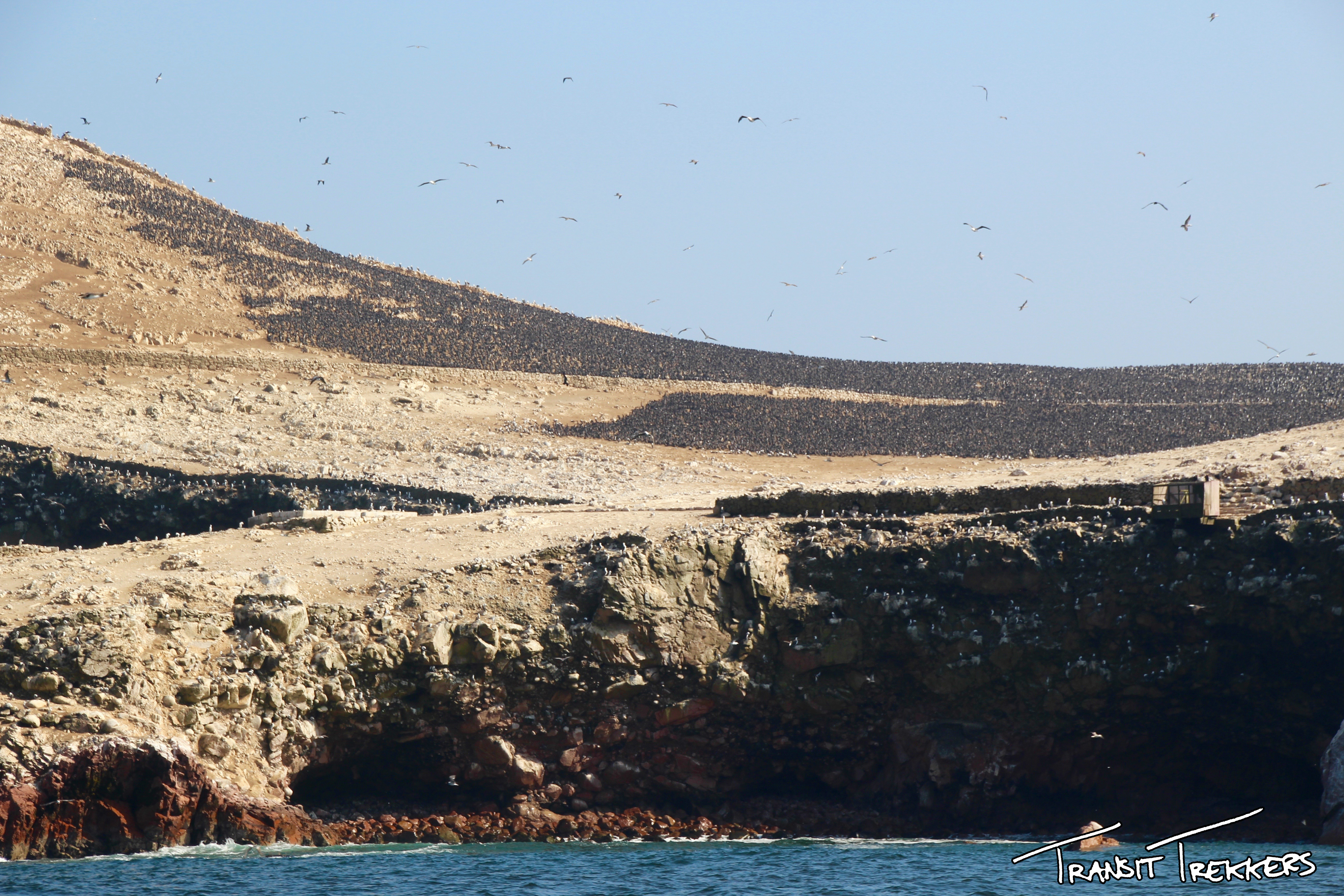
Those black spots are massive dense colonies of the Guanay Cormorants, producers of most of the guano on the islands
As far as the cities of Pisco and Paracus, they probably don’t warrant more than a few days’ visit. Pisco is a non-touristy city of 54,000 people still recovering from a massive 2007 earthquake that flattened the land. With a lot of local character, lively street markets, plazas surrounded by pre- and post- earthquake buildings, and tons of tricked out moto-taxis (think tuk-tuks), Pisco struggles with a wide spread trash problem. Some evenings the smell of burning garbage wafts through town and stray dogs roam trash piles in search of scraps.
Paracus, a port town of 4,000 year round residents, caters to tourism generated from Las Islas Ballestas. Relative to its neighbor Pisco, a 20-minute car ride away, Paracus is small with a few tourist restaurants, hostals, and many gringos, but not much character. Ultimately, we are glad we spent a few days in Pisco to experience the local life and beautiful sunsets.

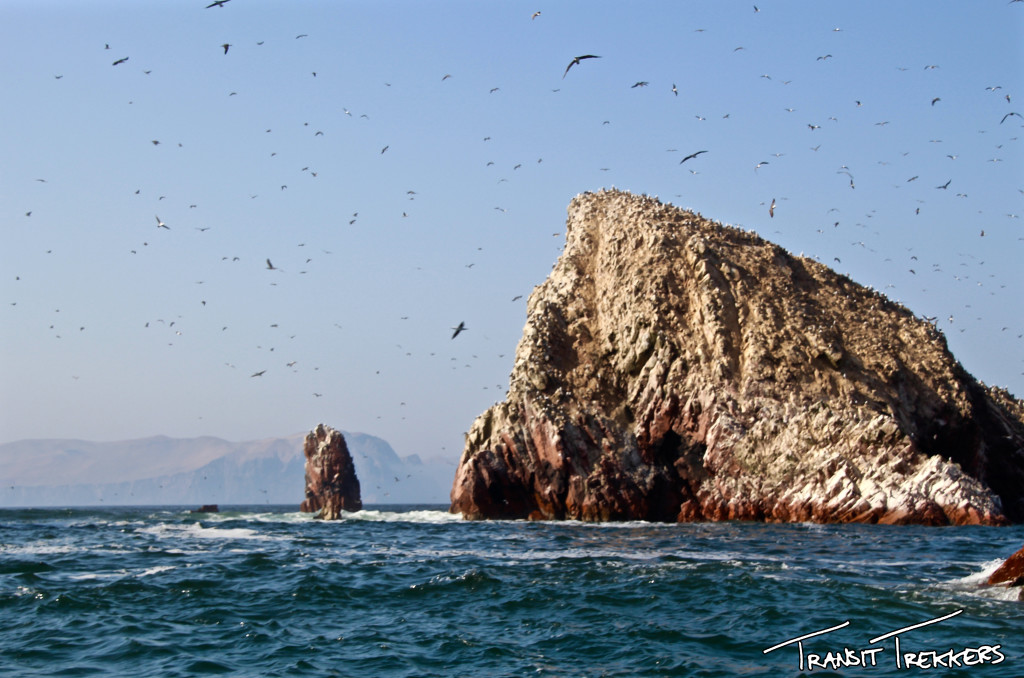
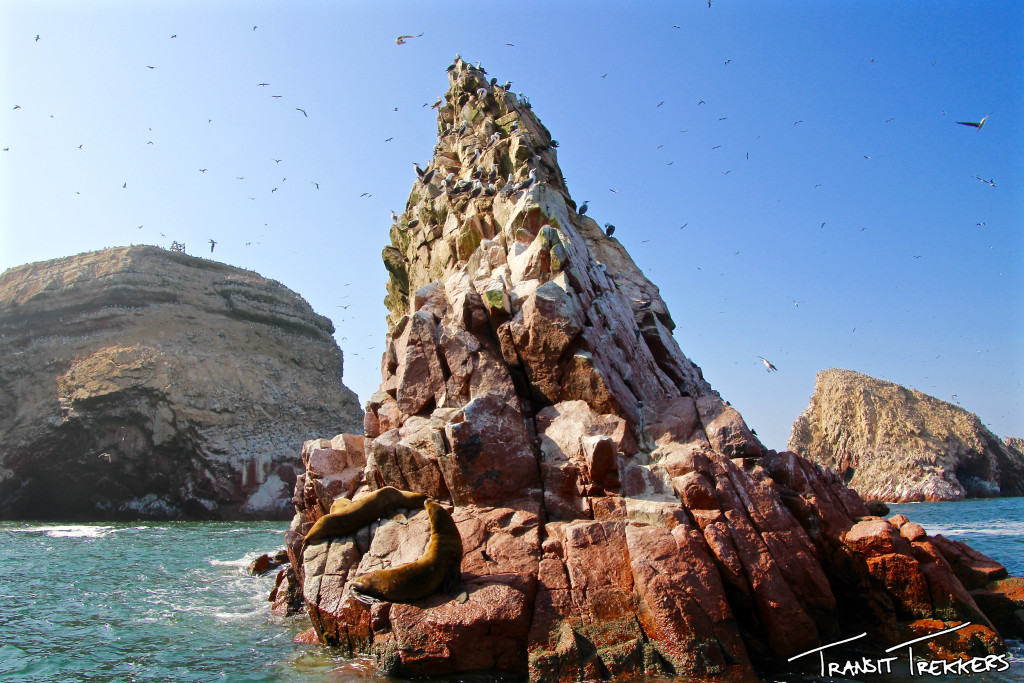
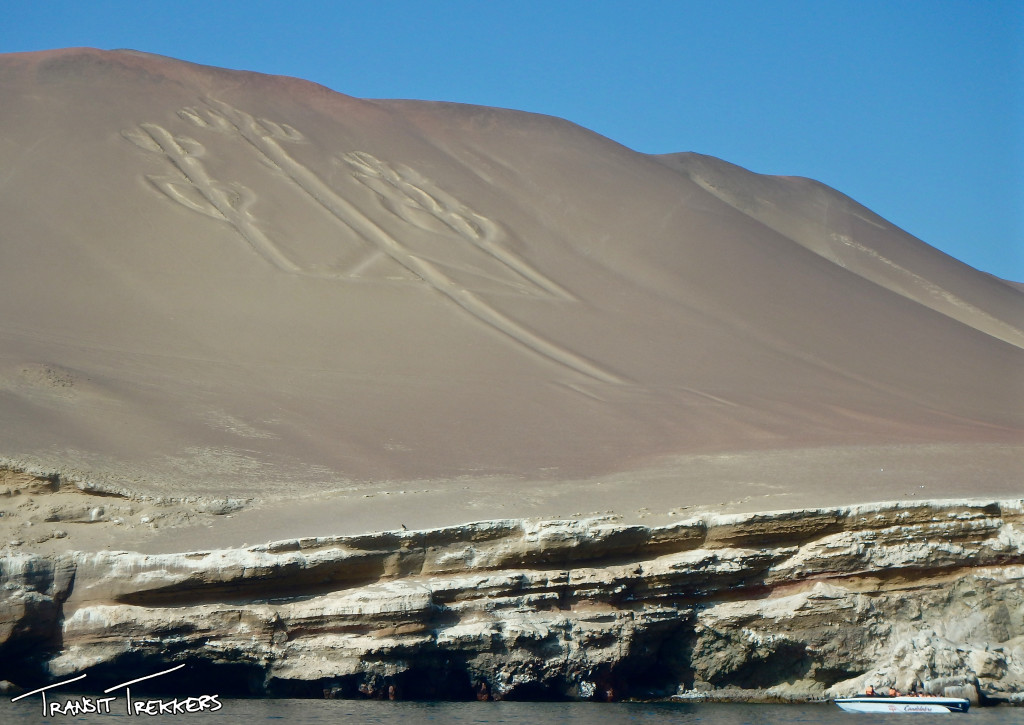
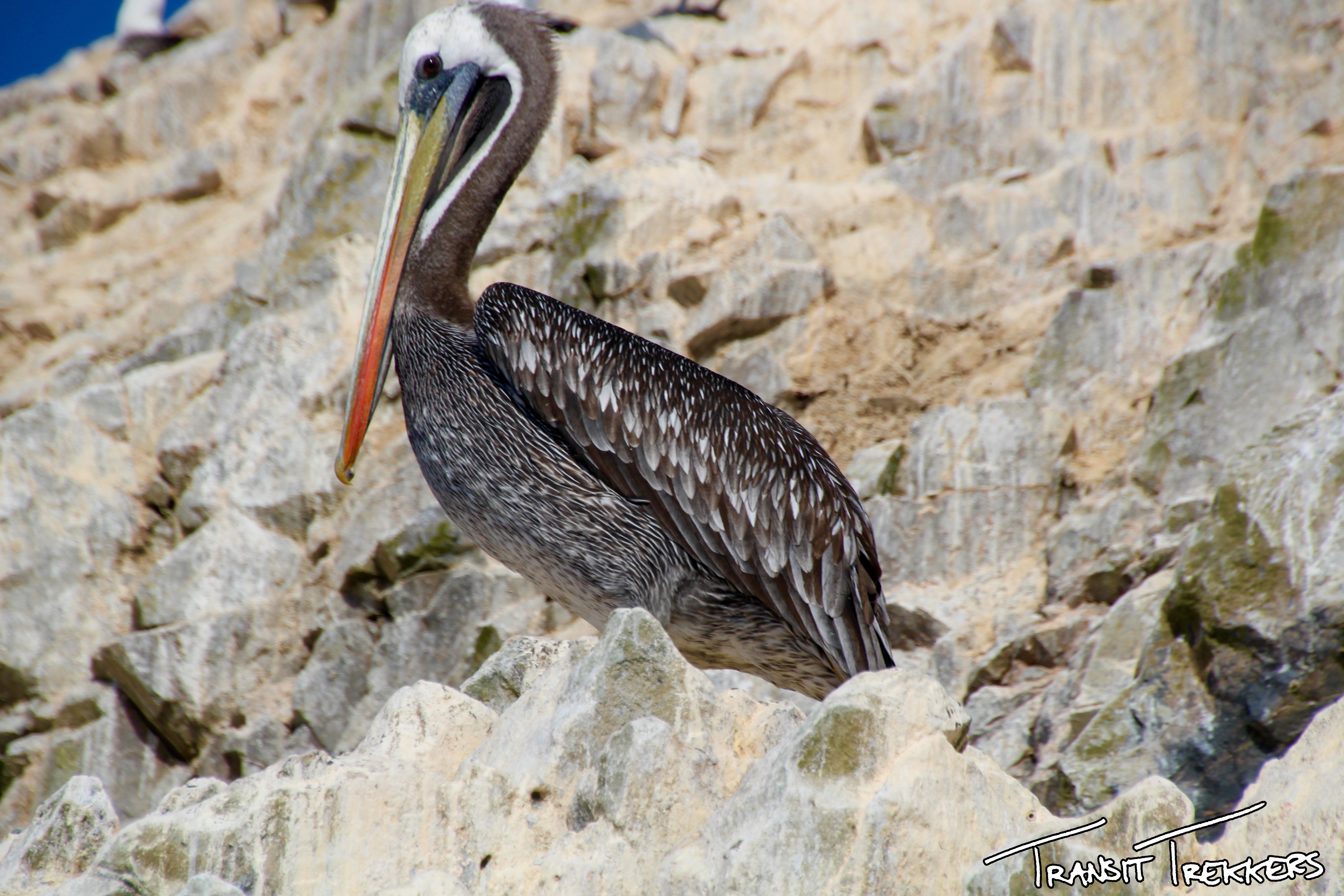
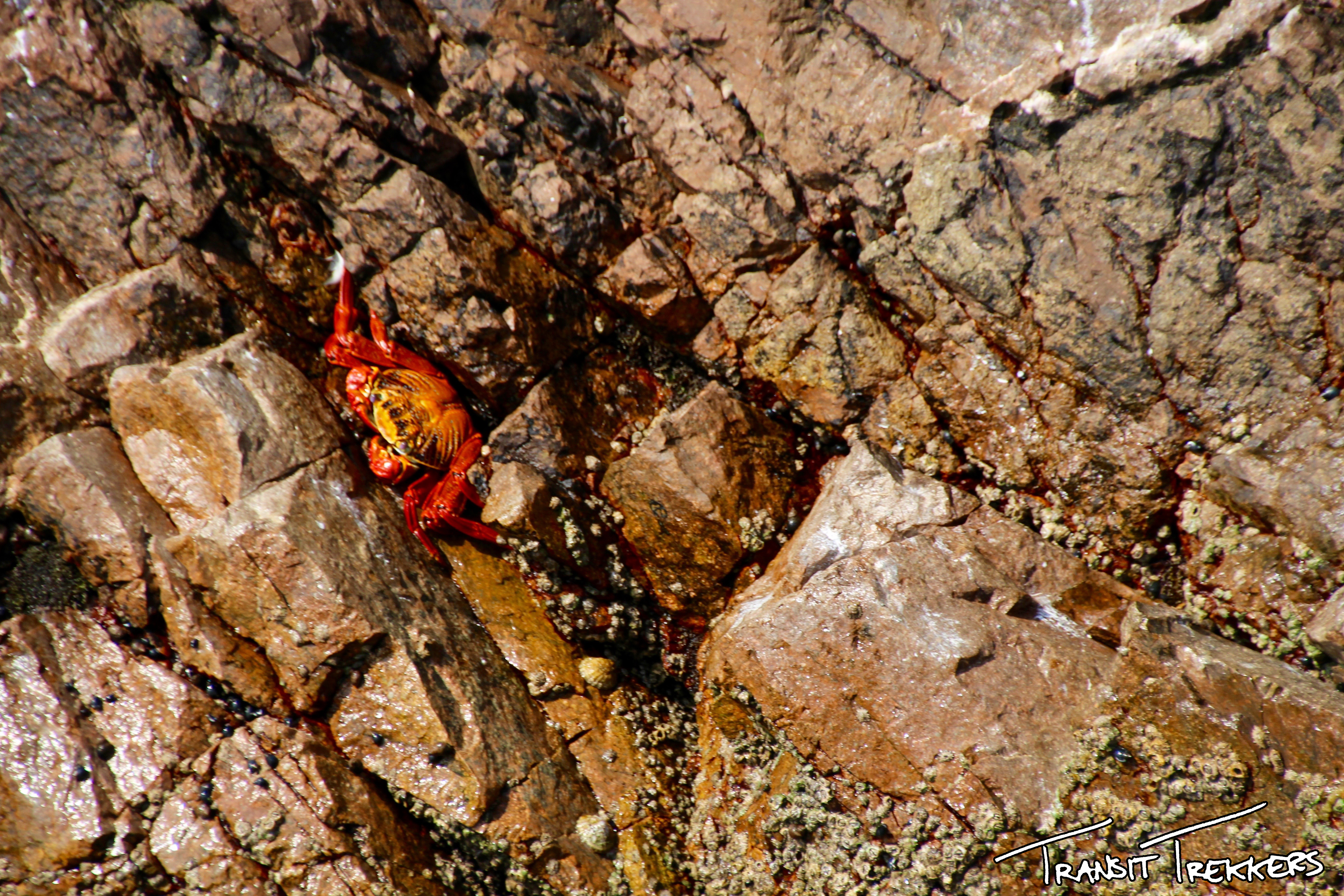
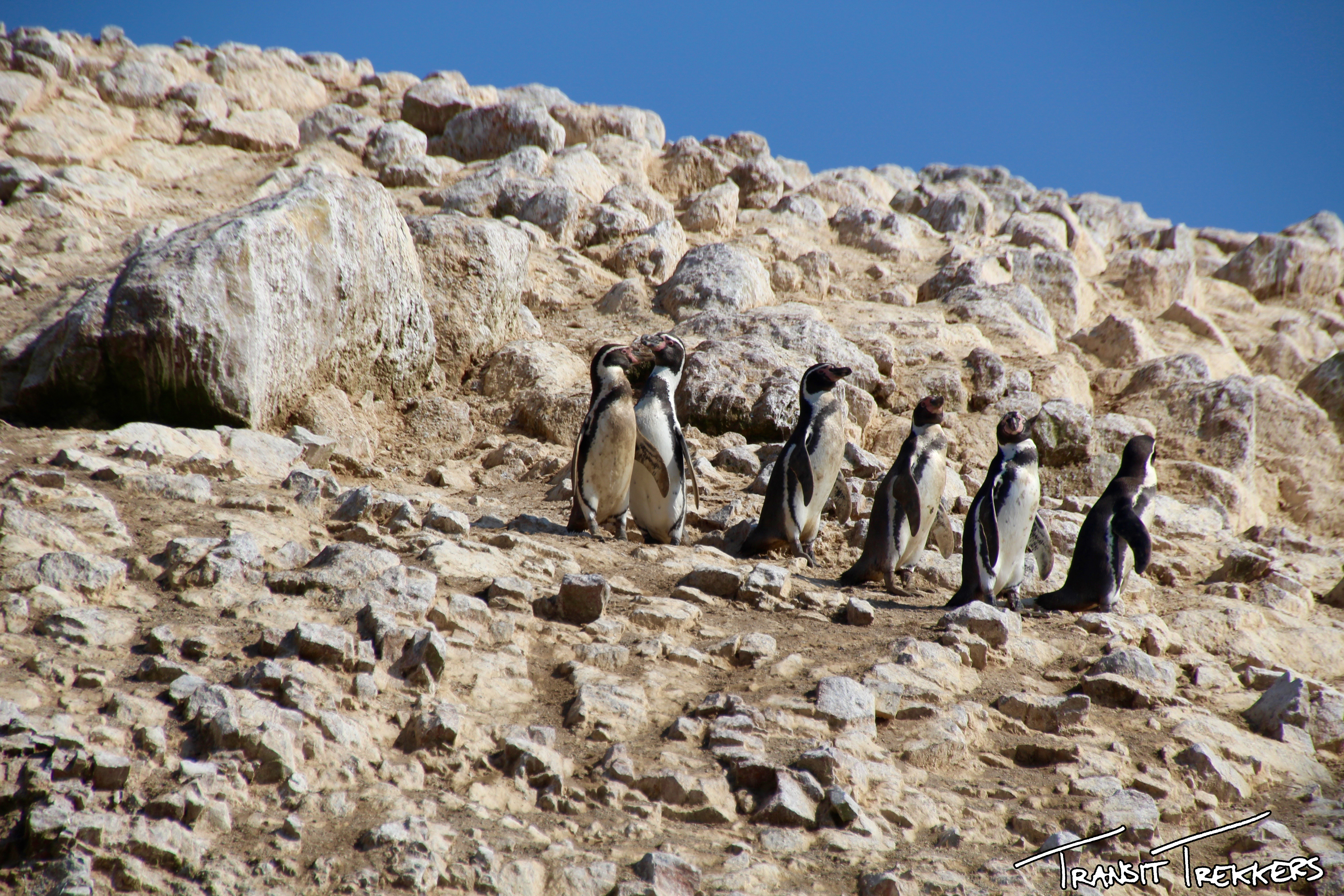
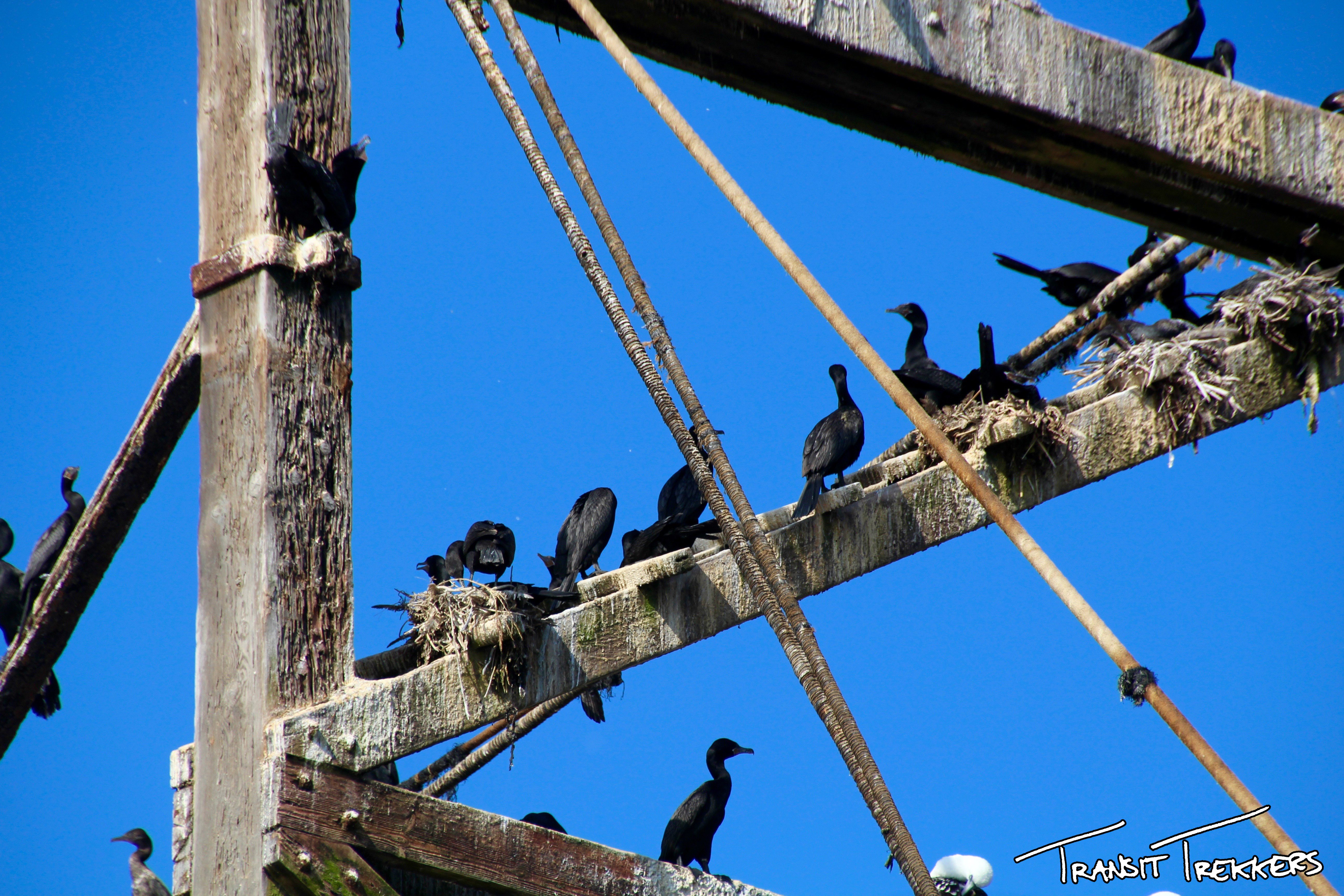
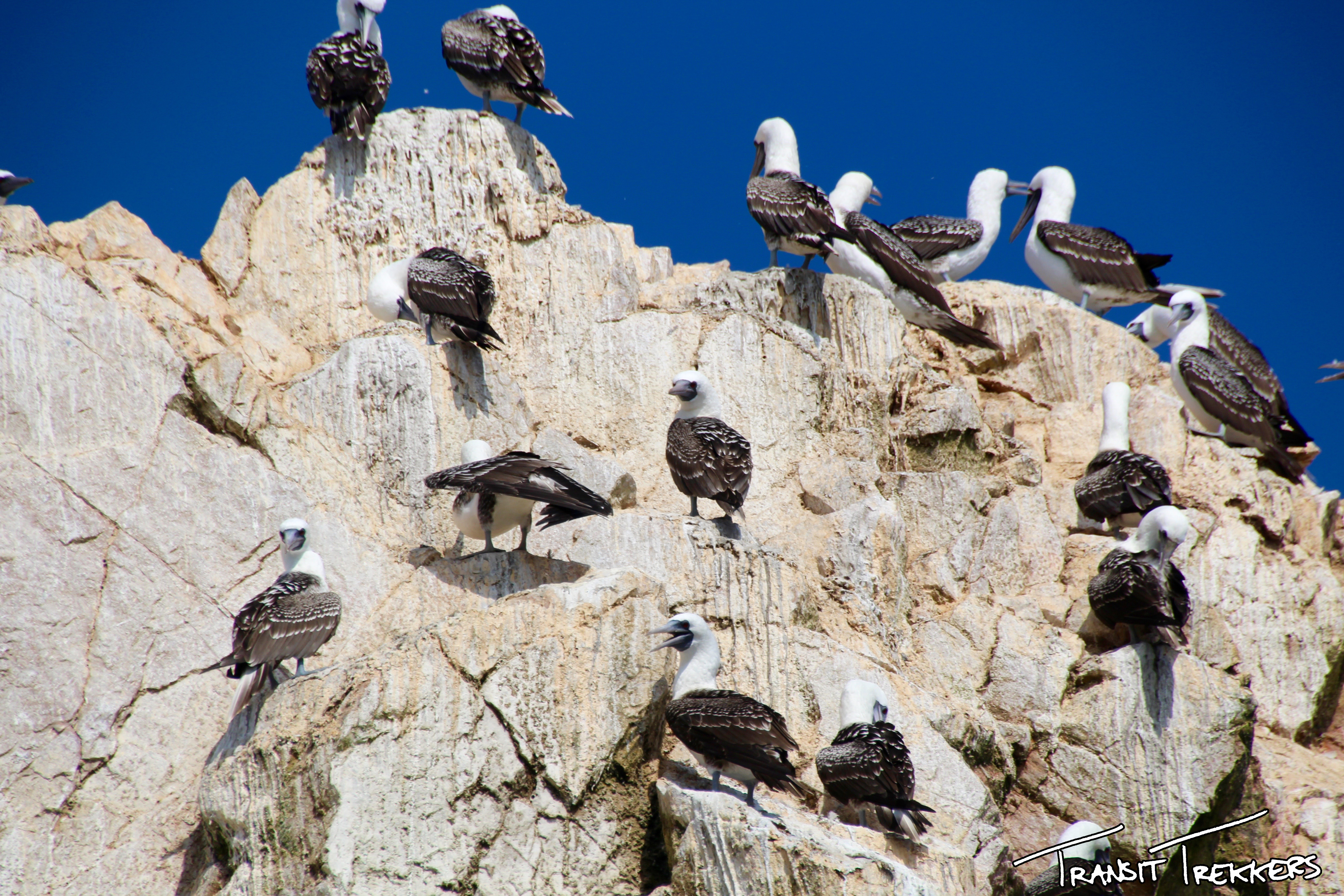
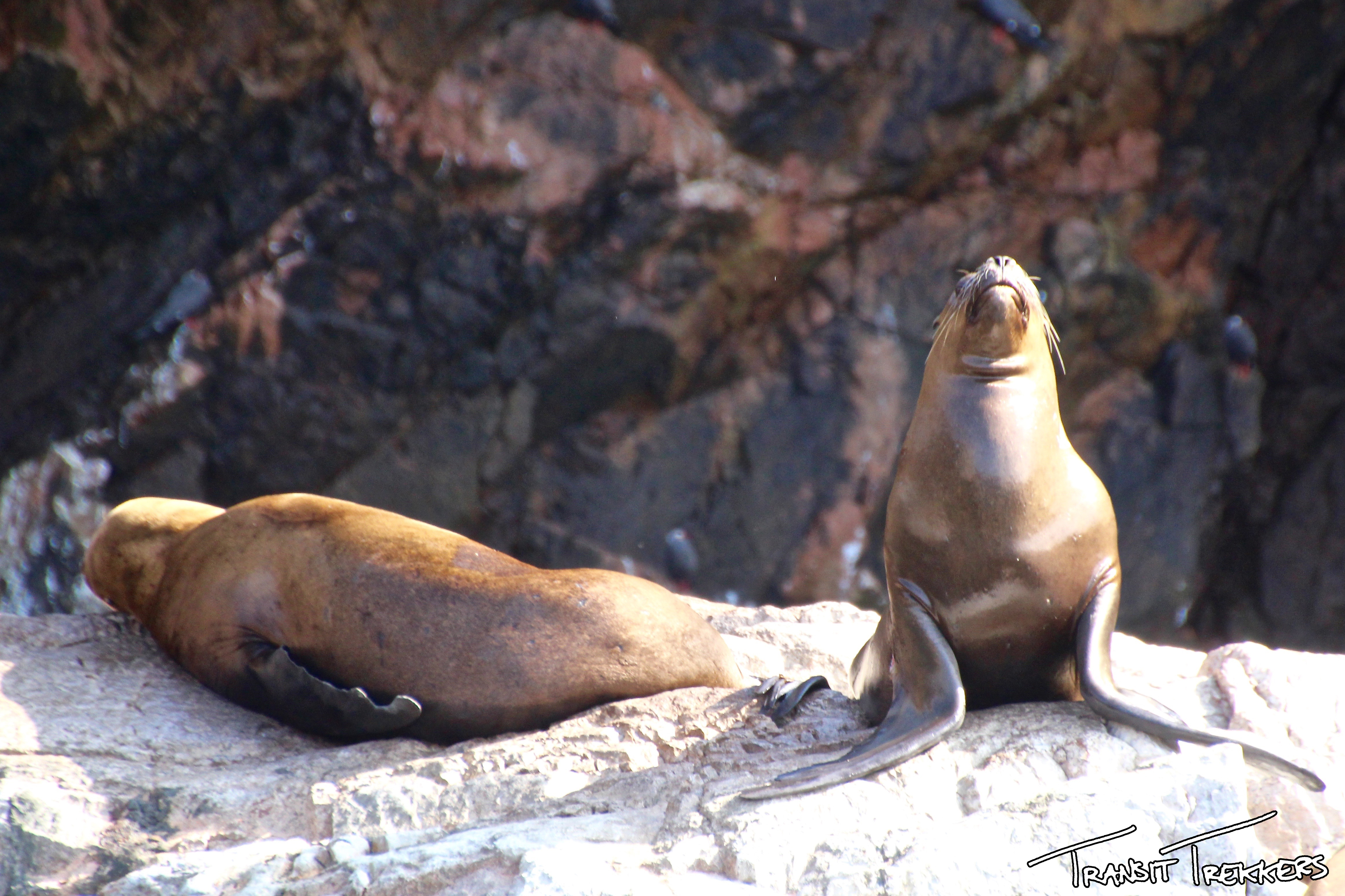
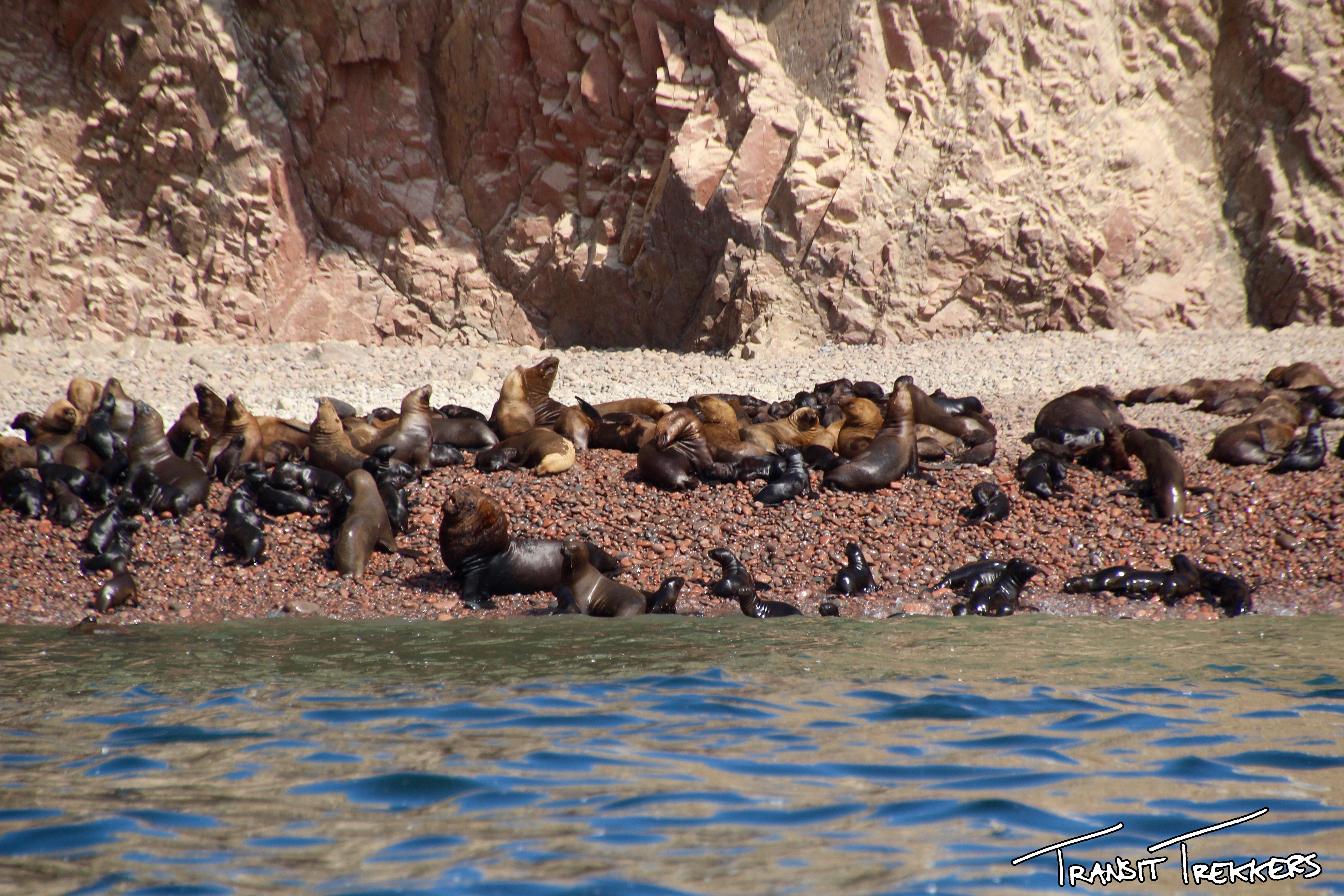
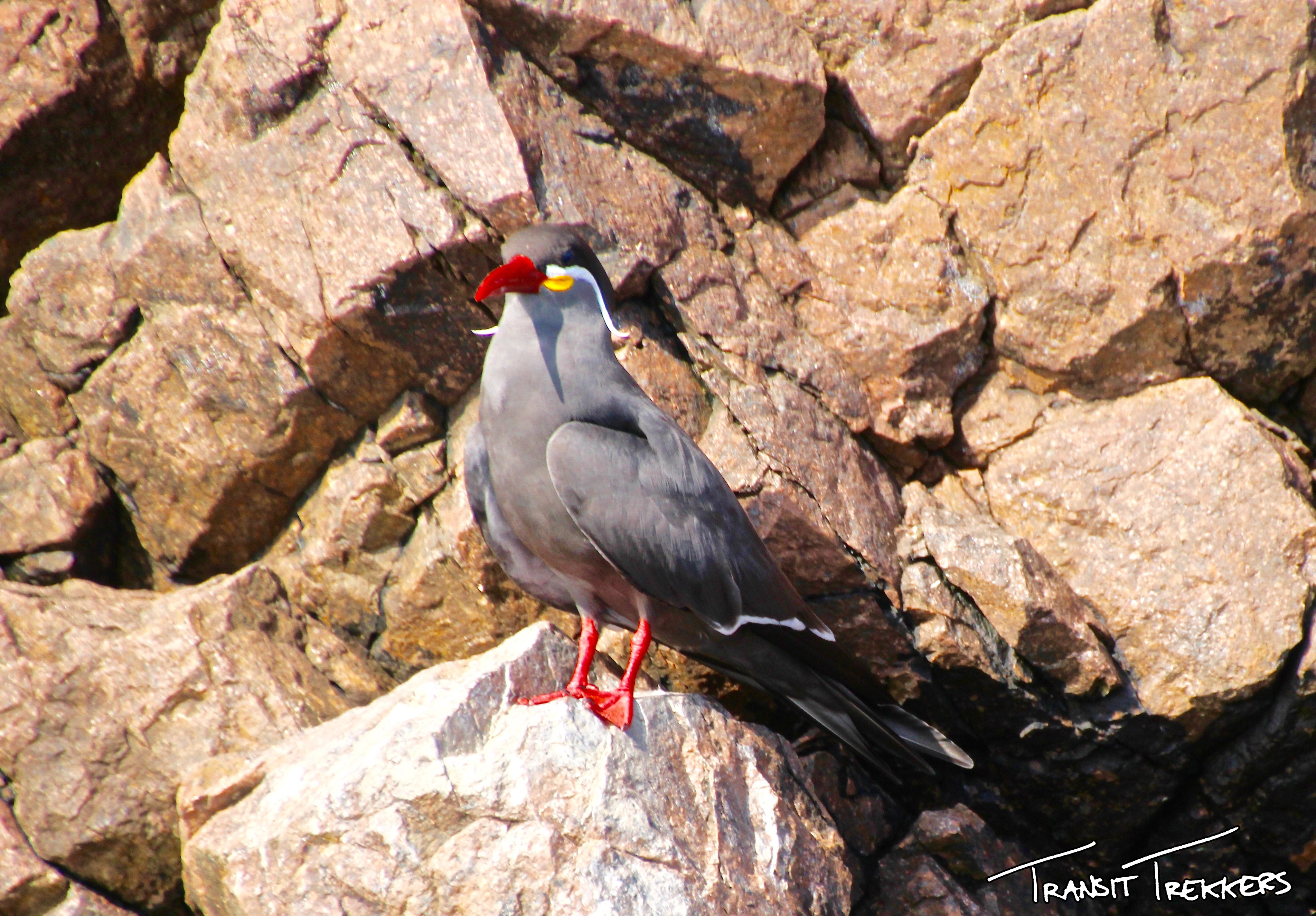
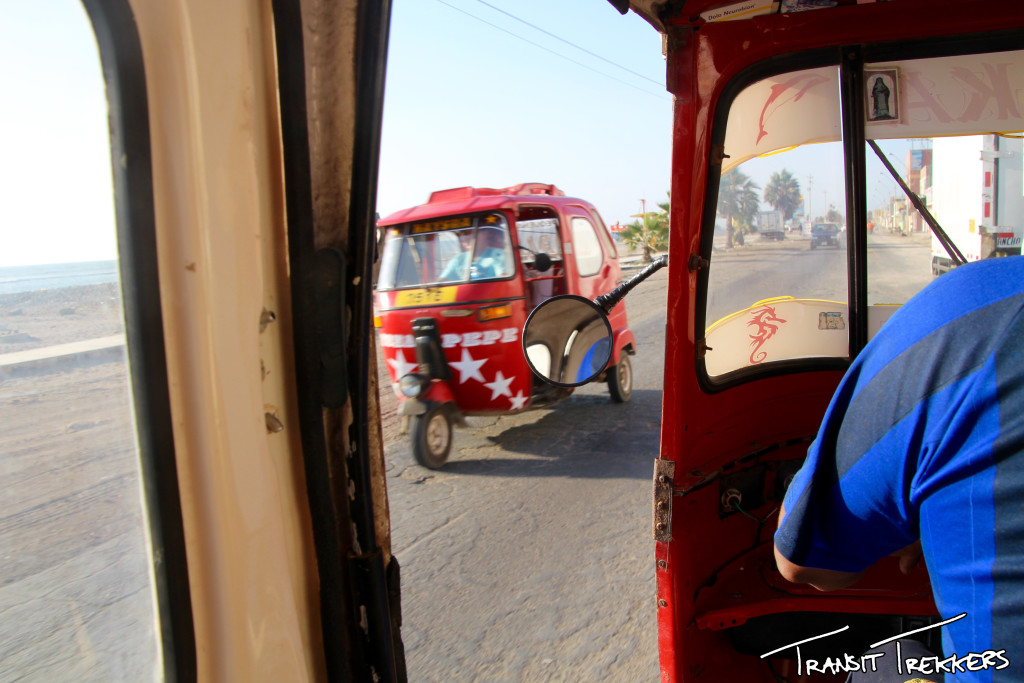
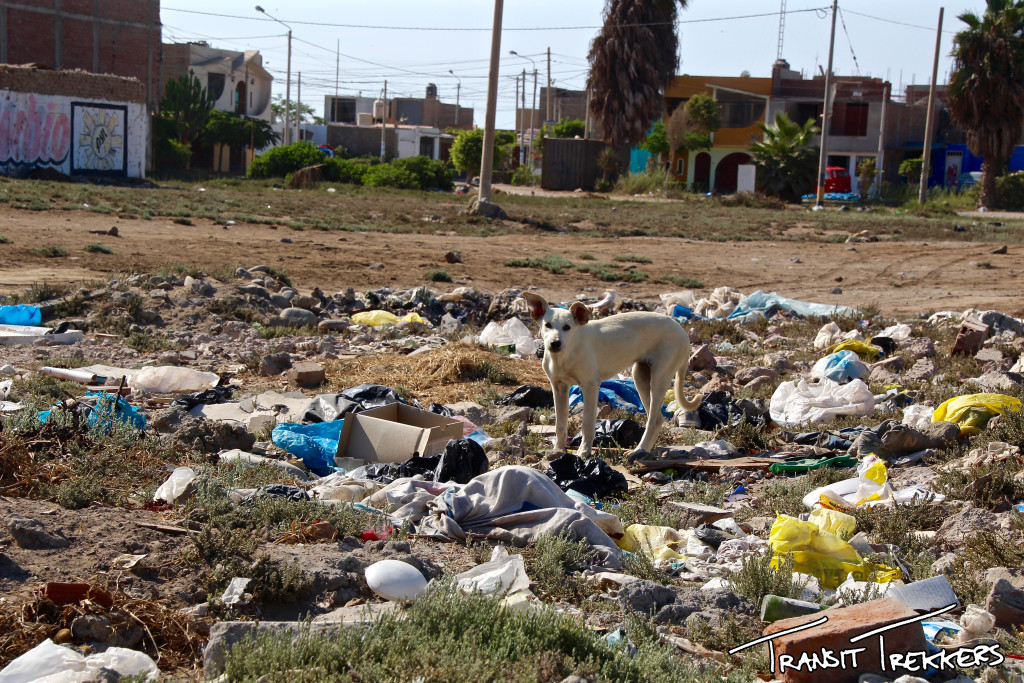
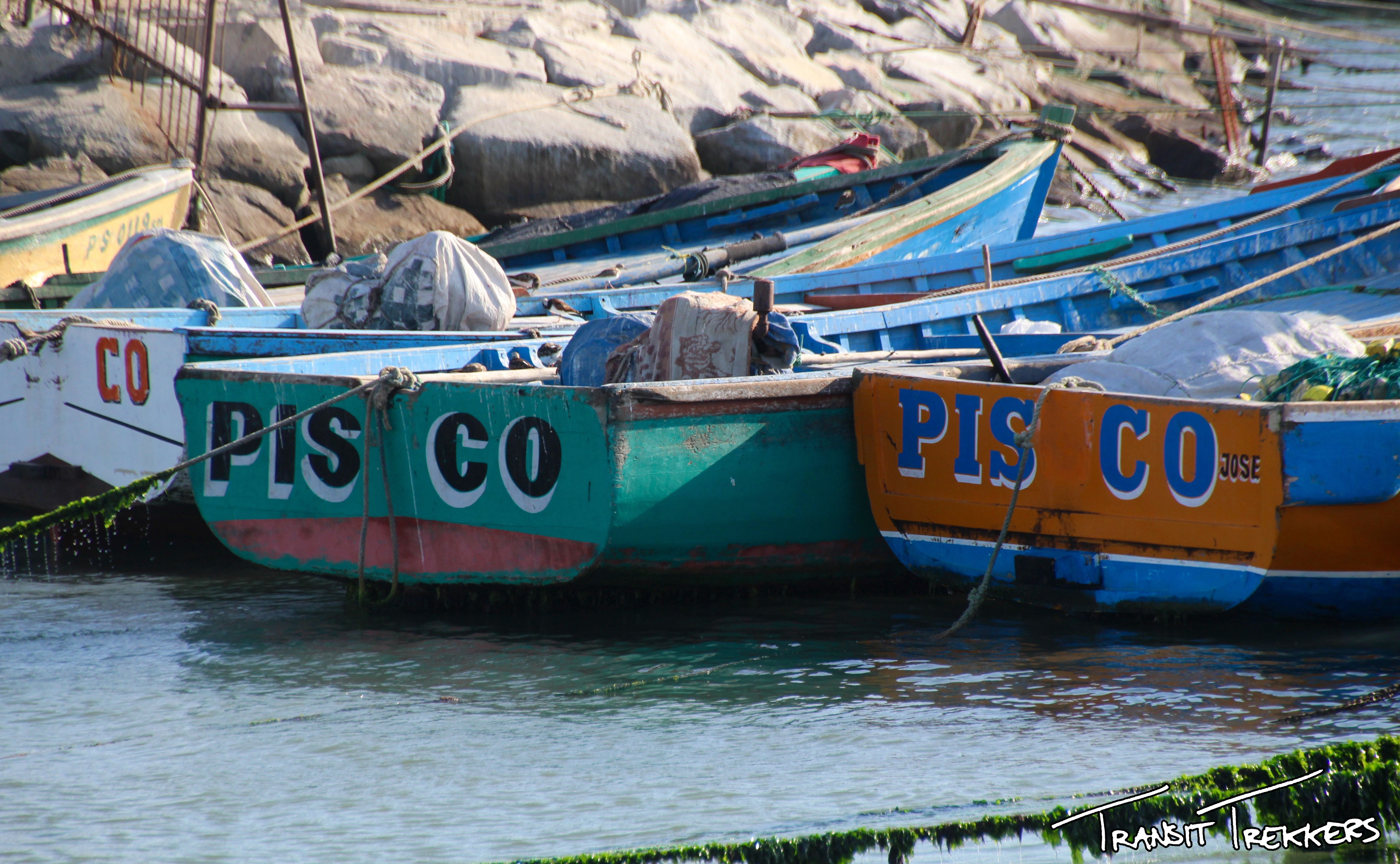
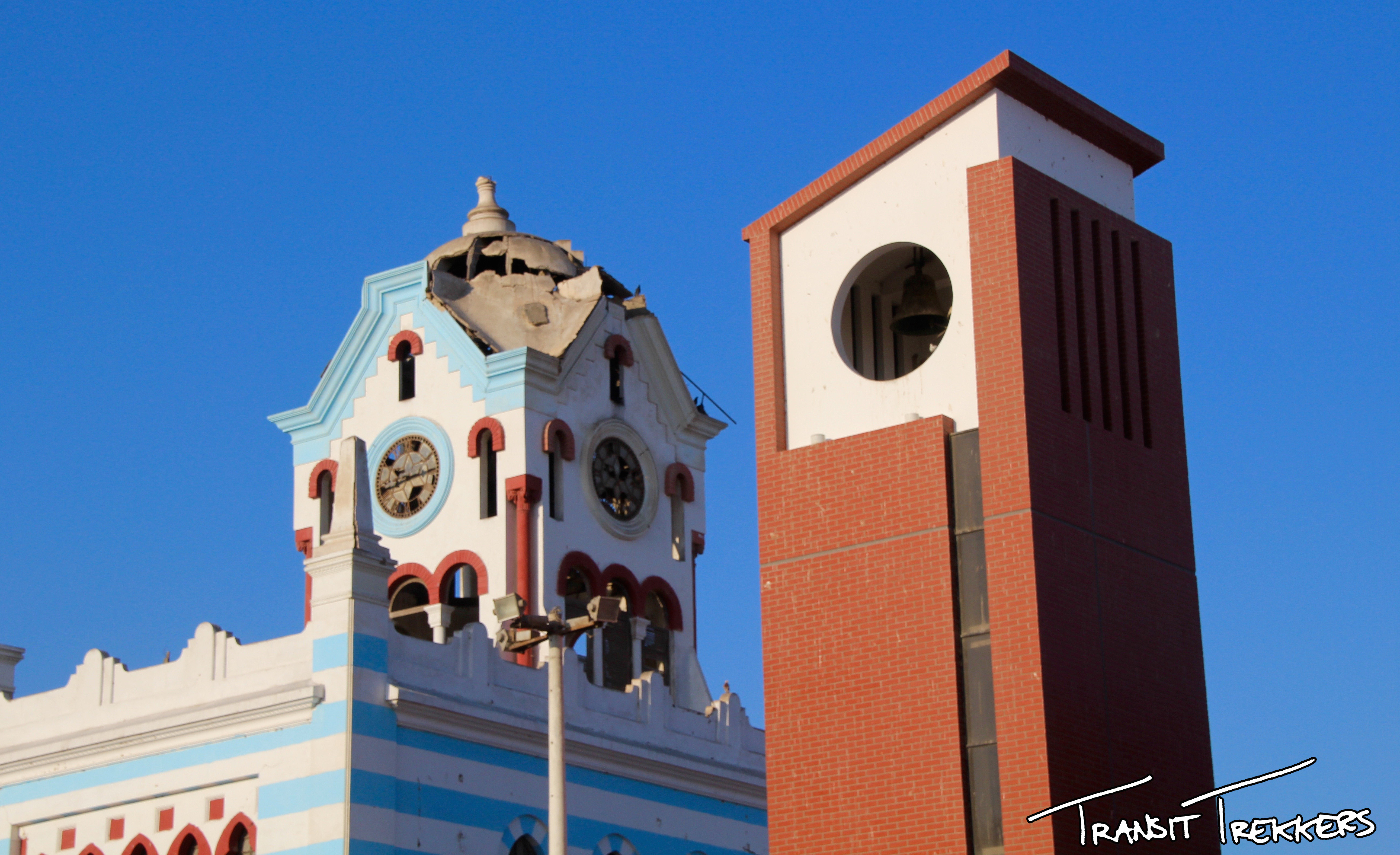
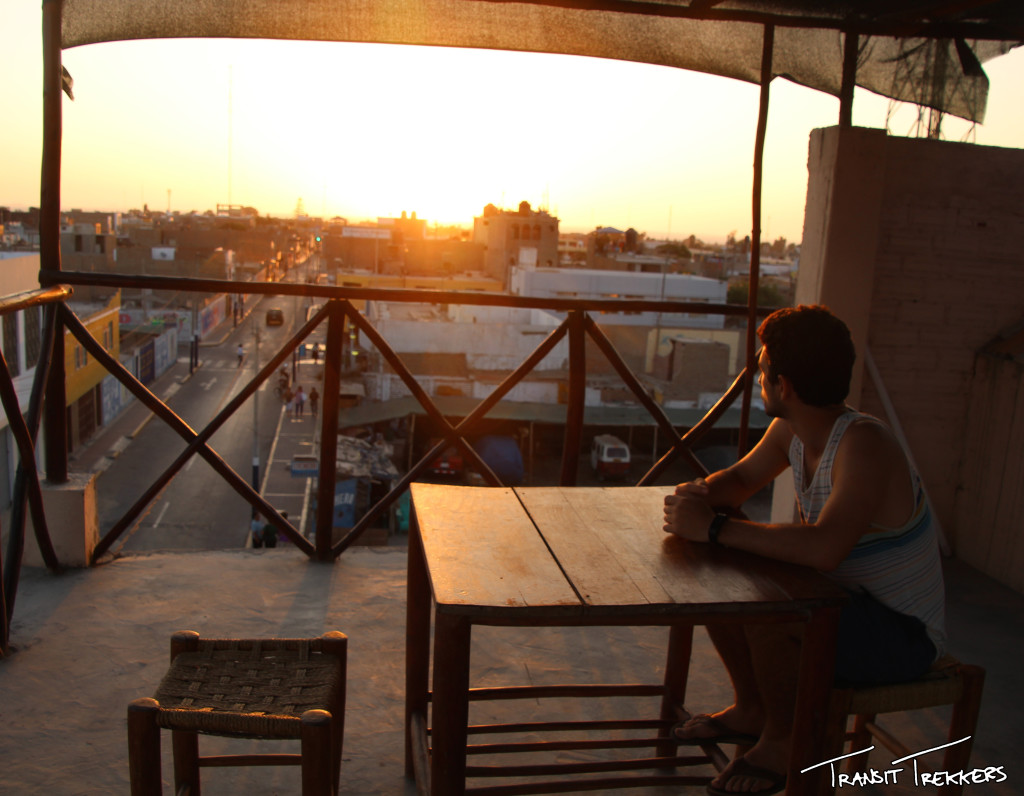
April 29, 2015 at 8:39 AM
Wow, u are getting an education. How did u get the bird names? Could u ski on the bird poop?
I am at Huston airport waiting for the SFO flight.
July 14, 2015 at 6:42 AM
Hi Dad! They gave us all the bird names in the brochure and unfortunately, no skiing allowed but we’re going next week! Chile finally got lots of snow!
April 27, 2015 at 11:30 PM
Hi, Tamara & Mikey!
Beautiful photos! Glad you’re leaving all that guano! What a stench!
Hope you’re having a great trip!
ENJOY! Love,
“Auntie” Ann
April 23, 2015 at 7:54 PM
I feel like I’m triple dipping! Family updates, beautiful photos, and geography lessons all in one! LOVE!
April 23, 2015 at 7:20 PM
thanks for sharing! we will have to follow your trek next time we go to peru.
April 23, 2015 at 10:22 AM
Fantastic photos…keep up the good work…and of course have fun!